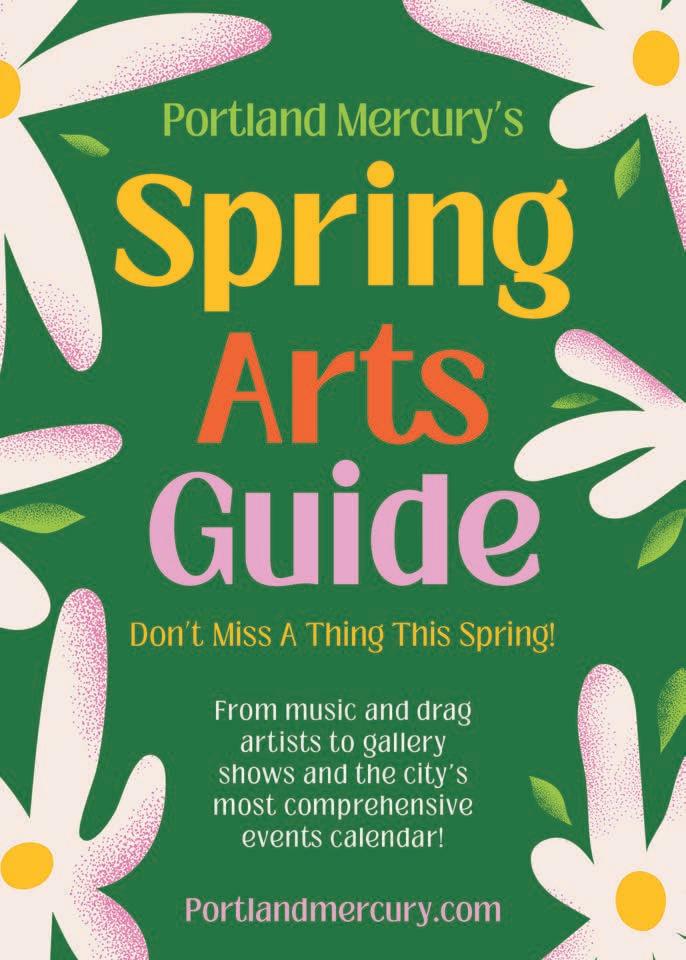














Former Portlander (and hilarious dude) Ian Karmel returns to town and has some interesting and funny things to say about Portland past and present. Good article, Ian!
9
13
Who doesn’t love Sleater-Kinney? And in this article Carrie Brownstein and Corin Tucker are like, “Here’s why we still love making music!” and “Wow, Portland is super-duper awesome!” (We’re paraphrasing here, but you get it.)
A lot of people express concern for the homeless, but how many are actually DOING anything about it? LaQuida Landford is a person who’s doing the hard work, and making lots of progress with her organization, AfroVillage PDX. (Be more like LaQuida.)

COVER ART
Illustration by Beth Jensen bethjensenillustration.com
Design by Corianton Hale
EDITOR-IN-CHIEF
Competition be damned, nobody hypes up Portland chefs like other Portland chefs! We picked some of the city’s best to share their fave dishes and toot the horns of their fellow food-slingers. (Don’t read this if you’re already hungry.)
Fewer people are biking these days, and our Taylor Griggs wants to change that with this sweet love letter to cycling in Portland. (Also, if you drive a car, stop fucking around in the bike lanes.)
You like to read, right? No? Well, you’re reading this aren’t you? You should read a book as well, and this article points you in the direction of Portland’s best themed bookstores. They’ve got something for everyone (which we suppose includes YOU).
If you don’t love drag artists, we can’t even with you. Seriously, you must hate life or something. Anyway, for those of us who DO adore them, Portland has SO MANY, and we’re going to introduce you to some! Yay!
A bunch of cute animals. That’s what you want to see, and this article has them. What else could you possibly want from us? Don’t answer that, we don’t want to know.
Dude. This “Where’s Waldo”-style fun page, where you have to find “Time-othy the Chrono Goblin,” is SO HARD. Seriously, we sincerely doubt you’ll be able to find him, so maybe find a smart person to help you? IT IS REALLY HARD! Good luck! ♥
Wm.
Steven Humphrey
NEWS EDITOR
Courtney Vaughn
NEWS REPORTER
Taylor Griggs
ARTS & CULTURE EDITOR
Suzette Smith
MANAGING EDITOR
Janey Wong
FOOD & DRINK EDITOR
Julianne Bell
MUSIC CALENDAR EDITOR
Audrey Vann
ARTS CALENDAR EDITOR
Lindsay Costello
DATA MANAGER
Shannon Lubetich
ART DIRECTOR
Corianton Hale
ASSOCIATE ART DIRECTOR
Anthony Keo
PRODUCTION
David Caplan, Feedback Graphics
REGIONAL SALES DIRECTOR
James Deeley
SALES OPERATIONS MANAGER
Evanne Hall
SENIOR ACCOUNT EXECUTIVES
Anna Nelson
Katie Peifer
EXECUTIVE DIRECTOR
Tracey Cataldo
MARKETING & PROMOTIONS DIRECTOR
Caroline Dodge
PRODUCTION & MARKETING COORDINATOR
Taffy Marler
DIRECTOR OF VIDEO PRODUCTION
Shane Wahlund
PODCASTS
Nancy Hartunian
SOCIAL MEDIA MANAGER
Christian Parroco
EMAIL MARKETING SPECIALIST
Tonya Ray
VP OF PRODUCT
Anthony Hecht
LEAD DEVELOPERS
Michael Crowl
Nick Nelson
TECH SUPPORT SPECIALIST
Grant Hendrix
CLIENT SOLUTIONS MANAGER
Diana Schwartz
CUSTOMER SOLUTIONS MANAGER
Kevin Shurtluff
PROJECT MANAGER / CLIENT SOLUTIONS REPRESENTATIVE
Campy Draper
CUSTOMER SOLUTIONS REPRESENTATIVE
Katya Schexnaydre
CIRCULATION MANAGER
Kevin Shurtluff
DISTRIBUTION
Matt Stanger
distribution@portlandmercury.com
Business
COMPTROLLER
Katie Lake
President & Publisher
Robert Crocker

IT’S time TO TAKE Portland BACK from THE buttholes. HERE’S how.
By WM. STEVEN HUMPHREY
First of all, thanks to everyone who’s been saying nice things about Portland! And to those who’ve been spreading all those bad vibes? Hello… YOU ARE THE PROBLEM.
(Don’t worry, I’ll get to the identities of these “problem people” in just a minute. But first, let’s recap!)
Last year the Mercury introduced the “Say Nice Things About Portland” concept as a direct response to the wealthy, cynical conservatives who took advantage of the pandemic to gain political power and cram even more money into their bottomless pockets. And full disclosure, the “Say Nice Things” tagline was directly lifted from Emily Gail of Detroit, who in the 1970s was so sick of people crap-talking her hometown that she started a “Say Nice Things About Detroit” campaign which went a long way toward restoring that city’s damaged reputation. (You can read much more about this in my Say Nice Things About Portland manifesto from 2023, which I must humbly admit was a certified banger.)
But Portland isn’t Detroit, because we have our own host of challenges. Homelessness is real, drug addiction is real, and the devastating effects of the wealthy trying to desperately hang on to their money and privilege as capitalism slowly bleeds to death is OH. SO. REAL. For decades conservatives have been trying to squirm their way into Portland’s progressive politics with minimal success… that is, until the pandemic hit. That’s when they decided to go all in on pushing the narrative that the successful, and nationally adored Portland of 2015 had been brutally murdered by an explosion of homelessness, drug addiction, crime, and so-called rioters (in actuality mostly peaceful demonstrators asking for a bare minimum of racial justice).
Facing what they laughably considered to be an existential crisis, a patchwork of downtown commercial real estate brokers, developers, and our local business association (formerly known as the Portland Business Alliance until they changed their name to Portland Metro Chamber to mask their terrible rep) formed a loose coalition of assholes who sprang into action. They wrote negative opinion pieces, commissioned slanted polls, erected laughably awful anti-Portland billboards, and issued
warnings that if their business concerns weren’t immediately addressed, coddled, and enabled by the city, Portland would collapse in on itself like the haunted house at the end of Poltergeist They used fear and intimidation (and MONEY, baby!) to convince Portlanders that only they could solve our problems—many of which were caused by their own greed and neglect.
Many of their shameless attempts paid off: They financed campaigns which eventually resulted in the most conservative city council (and mayoral candidates) Portland’s had in decades. This is the same city council that repeatedly tried to scuttle voter-approved charter reform, as well as the innovative and popular Portland Street Response program, and gave the okay for Zenith to continue dangerously transporting millions of gallons of oil through the city (despite our so-called climate goals). At the same time this coalition of wealthy nay-sayers stumbled upon a winning game plan: When a progressive law they hate passes, they wait three months, and if it isn’t an immediate success, they label it “an abject failure” that needs to be “fixed” or completely overturned. (Pour one out for Measure 110.)
So yeah… these buttholes are THE PROBLEM.
And this is where “Say Nice Things About Portland” comes in! Don’t be fooled by the loud braying voices of these rich, narcissistic crybabies whose only concerns are their own financial success. THEY ARE THE MINORITY. Portlanders are finally waking up to their cynical schemes, and realizing that our city is far healthier than what some people would have us believe. Take a look at the diverse pack of city council candidates that you’ll be voting for in November—you’ll find a host of activists, progressives, and people who are interested in solving our issues instead of eternally kicking the can down the road and refusing to do the hard work necessary to tackle difficult problems. Of course you’ll see the occasional Business Alliance puppet in the mix, but overall this crop of candidates has the wealthy power brokers shaking in their Christian Louboutin boots.
These candidates, activists, and city cheerleaders represent the true majority of Portland—people who put the interests of the
community before their own selfish desires.
This begs the question: If nice people are the majority, then why do we seemingly only hear the loud whining of the butthole minority? Primarily because they’re organized and we aren’t. They’re also desperate, and willing to spend a disgusting amount of money to ensure their ideas become the dominant opinions. And if anyone disagrees with these opinions, an army of conservative internet bots are dispatched to issue threats, along with racist, misogynistic, and homophobic insults in an attempt to silence them. And just so we’re all clear, this conservative campaign is not limited to Portland—it’s a national trend that’s become particularly prevalent on the West Coast, as conservatives have infiltrated and are attempting to overthrow liberal strongholds in Seattle and San Francisco as well.
“Okay, yes, WE KNOW ALL THIS,” you might be sputtering loudly into my ear. “But what can we DO about it?”
So glad you asked! I think you’ll be surprised how easy it can be to regain control of your city. First: Vote in all upcoming elections . If you see someone who’s endorsed by the local business alliance, police union, the Commercial Brokers Association, or failed gubernatorial candidates like Betsy Johnson, RUN THE OTHER WAY. (I would also advise you to beware of consistently sketchy endorsements from the Oregonian and Willamette Week , but that’s between you and your god.)
Second: On a similar note, be wary of what local media is telling you. Don’t be fooled by unreliable polls commissioned by sketchy conservatives, and gleefully parroted by certain news organizations. Make no mistake, there are a lot of great reporters out there doing the real work of speaking truth to power, and at the same time there are a lot of editors whose main concern is accumulating as many fear-based clicks as possible. Treat all articles (including this one!) with the scrutiny they deserve, and write as many progressive op-eds as possible (trust me, the Oregonian will print practically anything).
Third: ORGANIZE. There are some fantastic local organizations who are already countering the current onslaught of negative narratives, including Friends of Portland Street Response, Portland for All, League
of Women Voters of Portland, Business for a Better Portland, Portland Metro People’s Coalition, and lots more. You can also organize your own group of friends and acquaintances to write emails, show up to city council meetings, or even make signs that reflect your positive attitude about Portland. (And if you can afford your own billboard, that certainly wouldn’t hurt!) This requires a certain amount of bravery—but it’s necessary. It’s not the job of the oppressed to constantly defend their existence and their right to live a happy life—but the rest of us CAN and SHOULD speak up. We’ve seen the positive outcomes that can happen when the community rises up to defend those whose voices aren’t being heard.
And fourth: SAY NICE THINGS ABOUT PORTLAND! Yes, you should absolutely defend our city against its many (including out-of-town) naysayers, but unfortunately you also have to defend it against seemingly liberal politicians who listen to the loudest, most obnoxious voices instead of actual experts. And while you’re at it, say nice things about PortlandERS— particularly the ones who have been doing the hard work of solving our problems without making the problems worse, while also championing the wild ‘n’ fun artistic shit that made our city so popular in the first place.
Long story short, this is what we’re focusing on in our second annual “Say Nice Things About Portland” issue. We’re turning our gaze to the people, places, and even animals (!) that remind us of the positive things we should be proud of, and how good work based in kindness yields amazing results.
So let’s do this thing. Speak up for the thoughtful and progressive attitudes which will once again make Portland the envy of the entire nation. Say nice things about Portland, say nice things about PortlandERS, and say nice things about YOURSELF. You are smart, worthy of love, and your continued existence in this city and on this planet is important. We need you, and right now? Portland needs you.
Yer always pal, Wm. Steve Humphrey
Editor-in-Chief
Portland Mercury ■


A former Portlander returns to survey the city’s damage—and rebirth.
BY IAN KARMEL
Isat in my car outside of the Mercury offices. It was the beginning of March and I was afraid to open my door. It was raining—the kind of rain that’s hard to be romantic about even when you’re perpetually homesick. The drops hit your windshield in a way that’s meditative when you’re in park and horrifying when you’re in drive. It’s that sort of sustained, battering, ever-present rain that Portland gets every so often that lets people say “it’s so green here!” when they visit in August. It’s the kind of rain that native Oregonians, for whatever dumb reason, insist on braving without an umbrella.
When I finally succumbed to the reality of the weather, I jogged through the deluge, and into the friendly confines of the Mercury ’s office, and that’s when the pitch came in. “We’re doing a whole issue about why we still love Portland. You want to write something?”
To me, this wasn’t even a question. The two things in this world I love most are Portland and attention, and this gave me an opportunity to combine them. I have an affection for this city that starts in my bones
and weaves its way through my wardrobe, walls, and general sense of identity. It’s verging on obnoxious, to be honest. I’m wearing a Kacha T-shirt as I write this. My AirPods are in a Trail Blazer-themed case. A sizable banner hangs in my living room, decorated with a rose and the words “Portland, Oregon.” Not “I Heart Portland ‘’ or “Stumptown” or something else appropriately twee for a felt flag. Just “Portland, Oregon”—a point of interest, a simple declaration of fact. Except, it isn’t even a fact, because my living room is in Los Angeles. I’m an expatriate evangelist. I grew up in Beaverton, spent my twenties in Southeast, and I’ve been gone now for just more than a decade. A lot has changed in that decade.
Still, I agreed to the writing assignment in an instant. The editor and I fell into a banter that’s immediately familiar to anyone who has been put into a position to defend Portland.
Ten years
ago, telling someone you
were from Portland was like telling someone you were dating Stanley Tucci. This year it’s like telling someone you’re dating Stanley Kowalski.
“People act like the entire city is on fire! Oh, you can’t go downtown? I was just down there and I bought a $7 coffee and I saw a store selling $450 selvedge jeans! People were smiling, people were laughing, Pioneer Square was buzzing! Nobody was engaged in open combat with the police! Yes, I saw some people doing drugs—people have always been doing drugs downtown! I’ve done drugs downtown! It’s just a bunch of dumb Fox News bullshit propaganda. It’s so stupid. (Pause.) I mean. (Longer pause.) It is gnarly. (Pause.)
But it’s always been gnarly!”
When I’m outside the city, I feel very comfortable having this conversation. My job takes me on the road and when people find out that I’m originally from Portland, they are, without exception, compelled. This has always been the case, by the way. Ten years ago, telling someone you were from Portland was like telling someone you were dating Stanley Tucci. This year it’s like telling someone you’re dating Stanley Kowalski. In liberal cities people greet you with concern; in conservative cities they shower you with disdain. Like, honestly, an insane amount of disdain. With the Republican set, the city has reached mythical levels of animus on par with “welfare queens” and women who have even one opinion about their own bodies. Whatever their background, I’m more than happy to disabuse them of their concern, panic, or unsettling, misplaced hate. These people sincerely believe that the city is actively patrolled by fentanyl zombie ANTIFA supersoldiers, pulling hand-crocheted guns on innocent taxpayers, and demanding they update the pronouns on their LinkedIn. I savor the op-


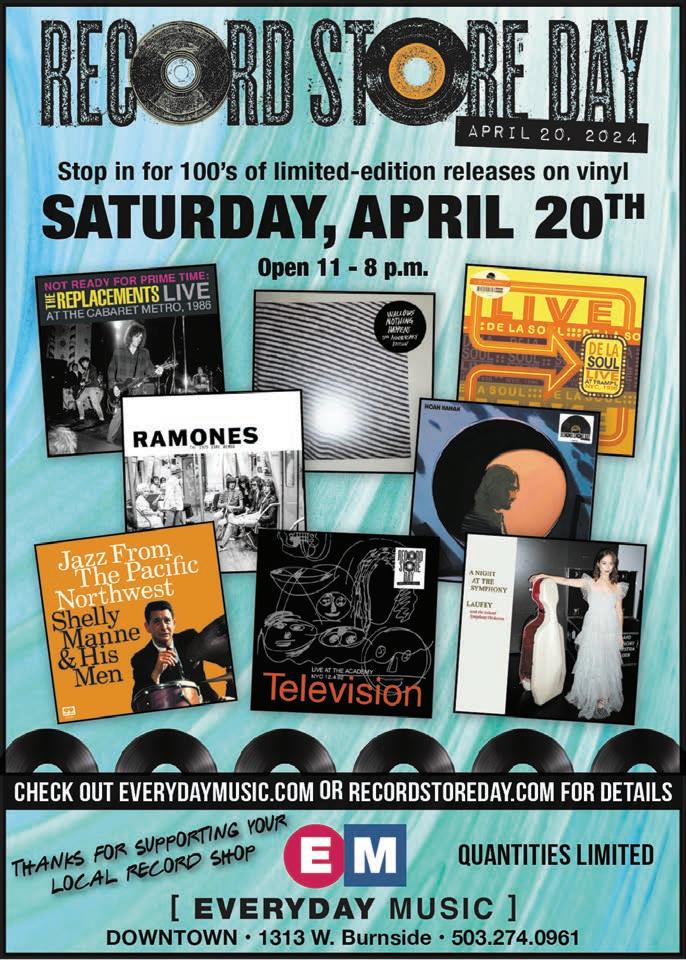

portunity to correct them. In fact, if they give me their email, I offer to send them a list of ice cream places they gotta try if they ever visit. Ice cream places . Multiple. Even Tucker Carlson likes ice cream. Defending Portland to an outsider is easy.
When I’m talking to someone in Portland, these conversations are harder, or at the very least, more complex. I’m the outsider now. I’m the tourist. I’m the person who thinks of Portland in terms of ice cream. You live here. You know the hyperbole is bonkers, but you’ve also cleaned human shit off your shoe in a puddle next to Powells. You see your fellow Portlanders hunched over in doorways hitting little glass pipes, and it’s more people than you used to see doing that, and maybe you don’t care. Or maybe you do care, but you care about the person, the human, who was a baby once just like you and me, who has been driven to desperation. You care about the economic system that has driven them there and the social safety net that has failed to deliver them any kind of meaningful aid. You care in the right way. Maybe you care like that and also in the superficial way. Is that okay? Maybe you hate the broken windows, even if they’re on a boarded up building, even if they’re on a Starbucks, even though corporations are violence, or whatever you’re supposed to say so people don’t get mad at you. By the way, please don’t get mad at me. My point is, no matter how you feel about the city of Portland, you live here. I don’t. I live in a world of increasingly hazy memories forged in chicken wings from Pok Pok, tequila sodas from Dig a Pony, and any number of other toppled institutions that won’t mean anything to
anyone in a generation. I can’t spin you a hagiography.
I left the Mercury offices and headed back out into the rain. It was dawning on me that writing about Portland wouldn’t be as easy as it was back when I had a weekly column in the print version of this newspaper. I needed to think, and I can’t think unless I walk, and since my veins now run cold with the coward blood of the Californian, I needed to walk indoors, away from the storm. Using the internal homing instincts of a man who hasn’t held an address here since Obama was President, I headed to Lloyd Center.
ogist could use to decorate their office. The Gap, Baby Gap, Gap Kids. Express. Express for Men. Express for Dogs. The food court was like a grand bazaar offering delights from the furthest reaches of the globe—every manner of cuisine, as long as it was drowned in corn syrup.
I love the broken people who have run so far west that there isn’t anywhere left to go but down. I love the artists creating and collapsing and abandoning their dreams for just long enough to pick up some new ones.
You don’t need me to tell you what Lloyd Center is like right now, but you may need me to tell you what it was like at the turn of the century. Here stood a bustling center of millennial commerce unmatched in the Pacific Northwest. Lloyd Center fucking ruled. There were so many places to buy baseball hats. There was an arcade, two movie theaters, a Spencers and a Hot Topic, an ice skating rink, and a store that mostly sold rainsticks and driftwood and other things a childhood psychol-

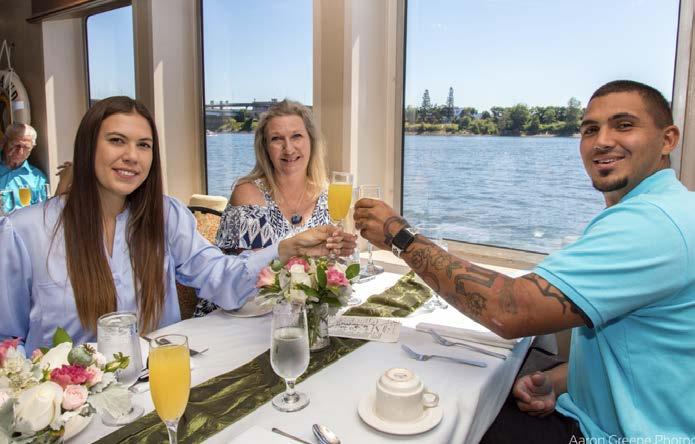
Lloyd Center was A MALL. Now it’s a crater.I feel like a schmuck saying this, but it was depressing. My friend, who is not a native, joined me on the walk and I kept pointing to vacant storefronts and telling him what it used to be, back in better times.
Lloyd Center isn’t abandoned, though, not quite. There are little stores popping up here and there.
You’ll see a comic book shop, like a hermit crab, in the shell of a shuttered Banana Republic. There’s a sneaker shop. There’s a pop-up art gallery. The headquarters of a civil rights organization. I don’t mean to paint a rosier picture than reality. Lloyd Center has fallen. I was lamenting the state of things and my friend, who’s not from Portland but who lives in Portland, waved his hand towards the failed mall. He said that it did suck, but also, it was like when
a tree falls over and a bunch of plants and mushrooms and smaller trees start growing out of it’s collapsed trunk. I was immediately jealous of the metaphor and then, just as suddenly, I was embarrassed. I had forgotten where I came from.
All those hometown T-shirts in my closet and cookbooks on my shelf, all the time I spent bragging about the beautiful summers and farm-to-table cuisine, all the love I had been shining on the superficial edifice of Portland, the value I had been extracting from the city’s cultural footprint all these years—and I’d lost touch with what really makes this city beautiful. The rot. The rot is what I love about Portland. I love the broken people who have run so far west that there isn’t anywhere left to go but down. I love the artists creating and collapsing and abandoning their dreams for just long enough to pick up some new ones. I love that there are people who refuse to let a pile of shit and a broken window stop them from starting a business. I love that they hate to complain, but do it anyway. I love that we try, and fail, and try again. I love that guy sleeping in a tent, smoking meth, and I wish things were better for him. Even if I’m annoyed that he’s ruining my brunch, I’m happy he’s here and alive, and not in Cleveland and dead. And you’re happy about that too, otherwise you wouldn’t be here. I love that it’s hard to be in Portland, because it’s always been hard to be here.
Don’t let Portlandia’s time in the sun fool you, this city has always been about the rot and the fertility that comes with it. Portland has always been about the rain. How do you think it got so green? ■



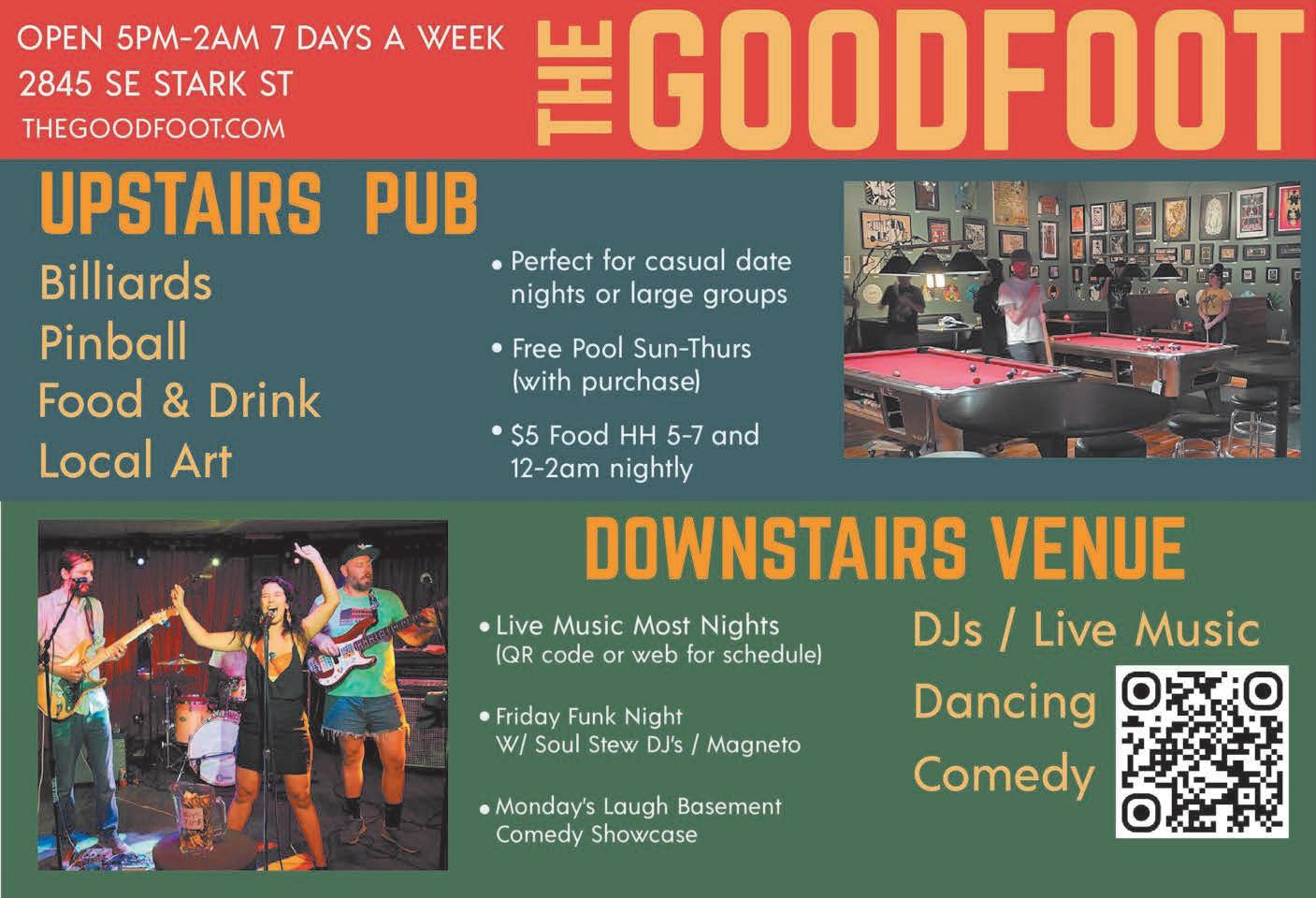
Indie rockers reflect on 30 years as a band, and why they still call Portland home.
BY COURTNEY VAUGHN
Fourteen years ago, Corin Tucker was sure her band Sleater-Kinney would never reunite.
In 2006, the group announced an indefinite hiatus following a tour for their critically-acclaimed album, The Woods. After playing a final, sold-out show at the Crystal Ballroom that year, the trio parted ways.
Tucker spent her time away from the band raising kids, starting another band, working a traditional job, and embarking on side projects. Her bandmates, drummer Janet Weiss and guitarist Carrie Brownstein, also moved on to other music groups and creative endeavors, with Brownstein co-creating what would become the hit TV series Portlandia.
“Certainly when Carrie started Portlandia I was like, ‘Oh my god, we’re not going to be a band again. Forget it,’” Tucker recalls. “She’s amazing and she has this whole other career, you know?”
The sketch comedy show saw Brownstein and Saturday Night Live alum Fred Armisen poke fun at Portland’s quirky, occasionally passive-aggressive culture. Portlandia thrust the city into the spotlight as a tragically hip, urban paradise dotted with bikes and trees. One particular sketch spawned the catchphrase “put a bird on it,” which briefly became the city’s other motto.
In an interview with the Mercury, Brownstein admits she never thought the catchphrase would take off like it did.
“I apologize. I had no idea…” Brownstein jokes, “but we have many options [for slogans]. The city that works, I feel like most of us might say that’s not a working slogan anymore, so it’s definitely up for debate, I think.”
She can still spot nods to the phrase in news headlines and memes.
“I’m always flattered that something that I put out in the world has entered the lexicon or public imagination,” she says. “It’s not something to bemoan.”
But for all the fun she had working on Portlandia, Brownstein later found herself reunited with Sleater-Kinney. In 2015, the group released No Cities to Love , the first album since their 2006 split.
Save for cult favorites Dead Moon, few other Portland-based bands have managed to cultivate and maintain a large, fiercely loyal fanbase over the course of three decades.
The band’s first album was raw, rudimentary, and purposefully unpolished. As the group established itself, Brownstein’s punk and post-punk influences emerged into signature guitar hooks. Tucker’s mez -

zo-soprano voice–illustrated by vibrato and heavy wails–became unapologetically pronounced.
Tucker has worked with Portland-based vocal coach Wolf Carr, whose guidance has also been tapped by other local acts like the Decemberists and Y La Bamba, and helped shape the caustic growls of Yob and Red Fang.
“There’s an inherent emotionality to her timbre, and she uses her vowels as the driver for that expression,” Carr says of Tucker’s vocal style. “She’s a powerful belter who wails on notes in her melodies. Corin has a genuine authentic voice… when you hear her sing, you know it’s her immediately.”
Kathleen Hanna of Bikini Kill once not-
ed Tucker’s voice can bring her to tears. Her bandmates have had similar moments.
Brownstein recalls the recording sessions for the band’s 2002 album One Beat when it came time to record vocals for “Sympathy,” a blues-tinged track about the premature birth of Tucker’s son that’s equally vulnerable and vociferous.


Tucker’s voice hit new heights while belting the lyrics, “there’s no righteousness in your darkest moment /We’re all equal in the face of what we’re most afraid of.”
“I remember when she laid down those vocals, both Janet Weiss and I were sitting in the studio, crying,” Brownstein says. “In Sleater-Kinney, there have been countless moments where she’s amazed me, and I’ve been in awe of what she can do and how much emotion she can bring.”
The beloved Portland band has evolved over the course of 30 years, as musicians and people. In 2019, after the recording of Sleater-Kinney’s ninth album, longtime drummer Janet Weiss departed the group, after disagreements over the creative direction and decision making.
Weiss’ absence soured many fans, and is often brought up by music critics.
Brownstein and Tucker now rely on touring musicians for live shows.
Tucker calls the band’s evolution “organic.” Brownstein says it’s taught her to be more present and appreciate the experiences of writing and performing.
“There’s very little I take for granted anymore,” she says.
Portland also has plenty of creature comforts, and no shortage of coveted restaurants.
Tucker cites the Saturday farmers market downtown, the coffee at Albina Press, and dining at Tusk among her post-tour musthaves. Brownstein says snagging a table at Luce is a highlight when returning home after months away.
And if she’s not on the road, Brownstein is probably playing pickleball.
Lately, she frequents the People’s Courts–an arcade and bar featuring pickleball courts, disc golf, ping pong, and corn hole in outer Northeast Portland.
The casual sport feels familiar to Brownstein, who was born and raised in Washington, the birthplace of pickleball. She grew up playing on neighborhood courts and in gym class.
“You know, a lot of cities are not really built in relationship to nature. They’re built in opposition to it, and I feel like Mother Nature just rules Portland.”
— Corin Tucker
One thing that hasn’t changed in more than 20 years: the city they call home. Tucker and Brownstein formed Sleater-Kinney in Olympia, WA in the mid-’90s (the band’s name comes from a freeway exit off I-5 in nearby Lacey) as the riot grrrl wave was budding in the Pacific Northwest. The band’s members later relocated to Portland before the release of their sixth album.
Brownstein has moved out of state a few times, including a stint in Los Angeles, but never stays gone for long.
“I moved here in 2001 and I’ve moved away a couple times, but I always come back,” Brownstein says, noting she’s “restless by nature.”
“I get the urge to venture out, but Portland just feels like a spiritual home. I love the trees. I love the gray. I love how verdant it is. I love the sogginess. I love the people,” she says. “I just understand the Northwest as kind of an interior landscape and I think that needs to match the external one and those are very fused for me.”
Tucker, who grew up in Eugene, acknowledges the city’s struggles.
“There’s a lot of sadness in Portland and problems that are really visible,” she says, but it hasn’t driven her away.
“I love living here,” Tucker says. “I think I would feel really homesick if I left.
Tucker, who’s spent plenty of time in other US cities, says Portland is unique.
“You know, a lot of cities are not really built in relationship to nature. They’re built in opposition to it, and I feel like Mother Nature just rules Portland. Like when the ice storm happened, it’s like, well? …It’s just a different relationship, and we’re not in charge. We really have to learn to live our lives around nature, and I really like that, actually.”
“You know what I love about it, is you meet a lot of different people, and a wide range of ages. I [sometimes] play with someone who’s 75, and the other weekend I played against a father and son, and the kid was 17. And I love that there are people who I would never meet otherwise.”
The same can be said about Sleater-Kinney’s multi-generational fanbase, which ranges from graying, middle-aged men, to 25 year olds just discovering the band’s music.
This year, Sleater-Kinney released their 11th album, Little Rope, with a US tour that wrapped at the Crystal Ballroom.
Before recording the album, Brownstein’s mother and stepfather died in a car crash while vacationing in Italy in 2022. The band says the experience and ensuing grief led to several tracks on the album being reworked, and others scrapped.
“Hey, get ready / I’ve been down so long I pay rent to the floor,” Brownstein sings in the opening lines of “Hunt You Down,” a synth-laden track with a haunting chorus.
It’s hard to imagine Brownstein and Tucker calling it quits again, but Brownstein says she’s bemused that Sleater-Kinney has endured for this long, and these days, she’s more grateful for it.
“[Nearly] every decade of my life has been partially informed by this band,” she muses. “We were never thinking ‘Yeah, we’ll do this until we’re, like, almost 50.
“I know there were so many early shows and recording sessions and moments that passed me by because I just thought, ‘Well, this will always be here,’” Brownstein says. “People go away and venues go away and family goes away and cities change. That’s so obvious, but you start to feel it, the older you get. You carry with you loss and change and transitions that wear you down or you feel it in your body. And so I think music now is just a way that I acknowledge being happy that I’m alive and that other people are alive.”
Sleater-Kinney will play Pioneer Courthouse Square on August 7. ■

‘round the clock.
BY DONOVAN SCRIBES (FKA DONOVAN M. SMITH)
Before I get started, (and piss people off), I should start by saying this: “house keys not handcuffs,” “care not jail,” and “stop the sweeps”—I breathe that.
Now, once you get past mantras, there’s some real life outside that we all have to acknowledge about the mounds of policy failure that has become Portland, and now Oregon’s massive homeless problem: our streets are wild.
The endless needles, pipes as common as the rain, the undiagnosed person throwing a chair into a grocery store window, the trash tumbleweeding every which way—it’s a lot.
Even when we recognize the scourge on the streets has been created by decades of government terror and disinvestment, as well as over-fidelity to the most deep-pocketed by those in power—those failures have turned into a more materially unstable and unsafe place for all of us if we’re telling the truth.
Which, speaking of disinvestment—did you know that in Oregon, which is just 2 percent Black, the most racially diverse county in the state, Multnomah, is just 7 percent Black? Despite that fact, we Black people make up almost a quarter of the growing thousands of homeless people in Multnomah County.
And this ironically, is where the good stuff starts to happen—at least in this story. The good stuff is in the brain and heart of LaQuida “Q” Landford, a Portland-by-way of Belize activist who embodies “the work.” She’s the
founder and Executive Director of AfroVillage PDX, a non-profit on the frontlines of tackling Black homelessness in Oregon. All the aforementioned issues with our homeless problem, be it the cause or the consequence, LaQuida is well aware of and more.
Stomp around Old Town with her, and she can tell you exactly what’s up: the woman who just got out and needs a little love as she navigates getting back inside, the teenager that’s back on that shit, the dealer who dealt him that shit, and the addict that’s burned through all the social services. She knows the small business owners, the neighborhood associations, the nonprofits: the ones taking action, and the ones acting. And she’s got love for them all.
Before she even incorporated AfroVillage PDX, she was busy trying to lift up the neighborhood with her “Old Town Fresh” initiative where she delivered mobile showers and hygiene products to people living outside from the patio of a small coffee shop — and she didn’t have a grant to do it, she just did it because she cares.
Q cares, if don’t nobody else care *2Pac voice*.
Officially formed in 2020, AfroVillagePDX has grown into a full fledged vision of healing and hope for those without a home.
Right now, they are partnered with Street Roots to create a free Wi-Fi hub throughout Old Town, because as anyone working in housing and homelessness can tell you, while high-speed connections may be as common as a nickel in a well for many, for those trying to get back on their feet, a strong and stable WiFi signal can mean the difference between getting a job, safe storage for your things, or just connecting with a loved one.

Now, that may not “clean up the streets” in the way a sexy (read: not sexy at all) new task force tries to “figure” out” what’s happening in Portland’s central city, but it will do something more revolutionary: materially help people.
Since returning to Portland from Belize after a near-decade year hiatus in 2014, LaQuida dreamed of a space for Black men and women that have been eaten up by the system, whether by the “justice” system, poverty, plain old racism,

or whatever Frankenstein ushered them to the concrete.
And now AfroVillage has identified an underutilized piece of land on the waterfront in lower Albina in collaboration with Portland Bureau of Transportation, sparking new conversations about how to activate it as a community resilience hub in the coming years.
And when she’s not on her high-level systems thinking, she’s on the ground. When a winter storm hits, she’s making sure that when the warming stations have closed, and it’s still freezing outside, folks get into a safe place to be at night.
She really does this. And while she may not get all the shiny accolades, she serves as a shining monument to the real in any room she stands in.
To that end, there’s no shortage of headlines about Portland’s housing crisis. But when the cameras cut, and the pens get put down and the ink dries, Portland can rest assured that someone is working to connect the dots, build the bridges, and give the care that money can’t buy—and that person is LaQuida Landford.
So the next trash tumbleweed you see, along with the next task force that follows it, you may find it hard to say nice things about Portland—I certainly have at times. But I take solace that one thing I can say with confidence that is nice is AfroVillage PDX.
Side note: While it’s true she has and will do this work with no money, we are all trying to move mountains under capitalism—so if you like Q’s work, why don’t you donate now to AfroVillage PDX at afrovillagepdx.org/donate. ■

Portland’s premier restaurant and cart owners hype up the local food and chefs they love!
BY ANDREA DAMEWOOD

Community over competition is a phrase you hear a lot if you spend time in the Portland restaurant scene.
For the most part, it seems to be true. Like any industry, there is some
hot goss and some seriously spilled tea, but chefs are always willing to gas up their own.
We reached out to five of Portland’s premier restaurant and cart owners–Earl Ninsom (Hat Yai, Langbaan, Yaowarat, etc), Gabriel Rucker (Le Pigeon, Canard), Alkebulan

Moroski (Dirty Lettuce), Gabrielle Quiñónez Denton (Ox), and Peter Cho (Han Oak, Toki, Jeju)–and asked them who they’d most like to say nice things about.
Earl Ninsom Loves Kaede
Earl Ninsom has the most impressive collection of restaurants in town (he’s behind Hat Yai, Eem, Langbaan, Yaowarat, Paadee, and Phuket Cafe), so he knows quality. Ninsom was an early ambassador for Kaede (8268 SE 13th), a tiny sushi restaurant in Sellwood that opened in late 2022 and seats only parties of one or two, with husband and wife team Shinji and Izumi Uehara making sushi and izakaya dishes meticulously.
“Their quality exceeds the size of their restaurant,” says Ninsom, who usually goes alone and dines at the counter. “Dishes from the hot kitchen from Chef Izumi look simple but are very, very well done. I really enjoyed the chilled eggplant, chawanmushi, dessert— and even the miso soup is way above the standard I get elsewhere. The way Chef Shinji treats both rice temperature and flavor, and seasoning the fish is always very thoughtful.”
Ninsom recommends getting two orders of the fatty chutoro tuna and Shinji’s signature
nigiri of tuna marinated in soy and jalapeno. (This is also my favorite restaurant of the moment; we try to go once a month for our hit of fish.)
Gabriel Rucker Loves Dimo’s Apizza
Gabriel Rucker, whose Le Pigeon and Canard have long set the standard for both Portland fine dining and flavor inventiveness, doesn’t get to eat out much on his down time. That being said, he’s willing to take a stand on what he calls the “incendiary topic” of pizza in Portland.
Dimo’s Apizza (701 E Burnside), which is right down Burnside from his restaurants, is the perfect place to grab a staff meal or a pie on the way home to his family. Rucker likes Dimo’s spicy salami and pepperoni pie, and said a recent order of a wild mushroom pizza was excellent, as the mushrooms were “kind of crispy and got this great texture.”
“Not only is their pizza great, in the summer they have a large patio you can hang on, and they’re such good neighbors,” Rucker says of the New Haven-style spot. “We’re not in competition with each other, we’re here to build each other up. Any neighborhood needs good people right now.”


















Alkebulan Moroski Loves Mirisata and Mia’s African Kitchen
Dirty Lettuce makes delicious Southern food, full stop. The fact that those savory greens and crispy fried chicken are all vegan is just a lovely bonus. Moroski says that his favorite place to swap meals with is Mirisata (2420 SE Belmont), the vegan Sri Lankan restaurant famous for its rice and curry.
“I think a huge strength they have is they’re working within a cuisine that is already heavily plant based,” says Moroski, who loves the coconutty pol roti and lentil dahl. “They’re introducing something people are unfamiliar with, and to have it be vegan on top of it, and have it actually work?
They’re killing it over there.”
Moroski also wanted to shout out Mia’s African Kitchen (6935 NE Glisan), which is in his neighborhood. “There are a lot of vegan options, the owner is super sweet and she’s always in there,” he says. “It’s a phenomenal flavorful little spot.” Mia’s is open in the mornings too, when the owner hand roasts coffee beans in a pan for customers, he said. “That’s home homestyle,” Moroski says, laughing.
Gabrielle Quiñónez Denton Loves En Vida, Street Disco, and Swiss Hibiscus

Everyone’s favorite Argentine-inspired, Pacific Northwest-at-heart wood fired restaurant, Ox, just celebrated its 10th anniversary. And after a decade as co-chef and owner with her husband Greg Denton, Gabrielle Quiñónez Denton says she still sees Portland drawing talent and enthusiasm to its culinary scene.
Catch the couple at their neighborhood haunt, En Vida (1303 NE Fremont), where she says they over-order so they have left overs to take home.
Their order: “Cornmeal masa empanadas, a green salad, and their fried yuca with cilantro aïoli. Then


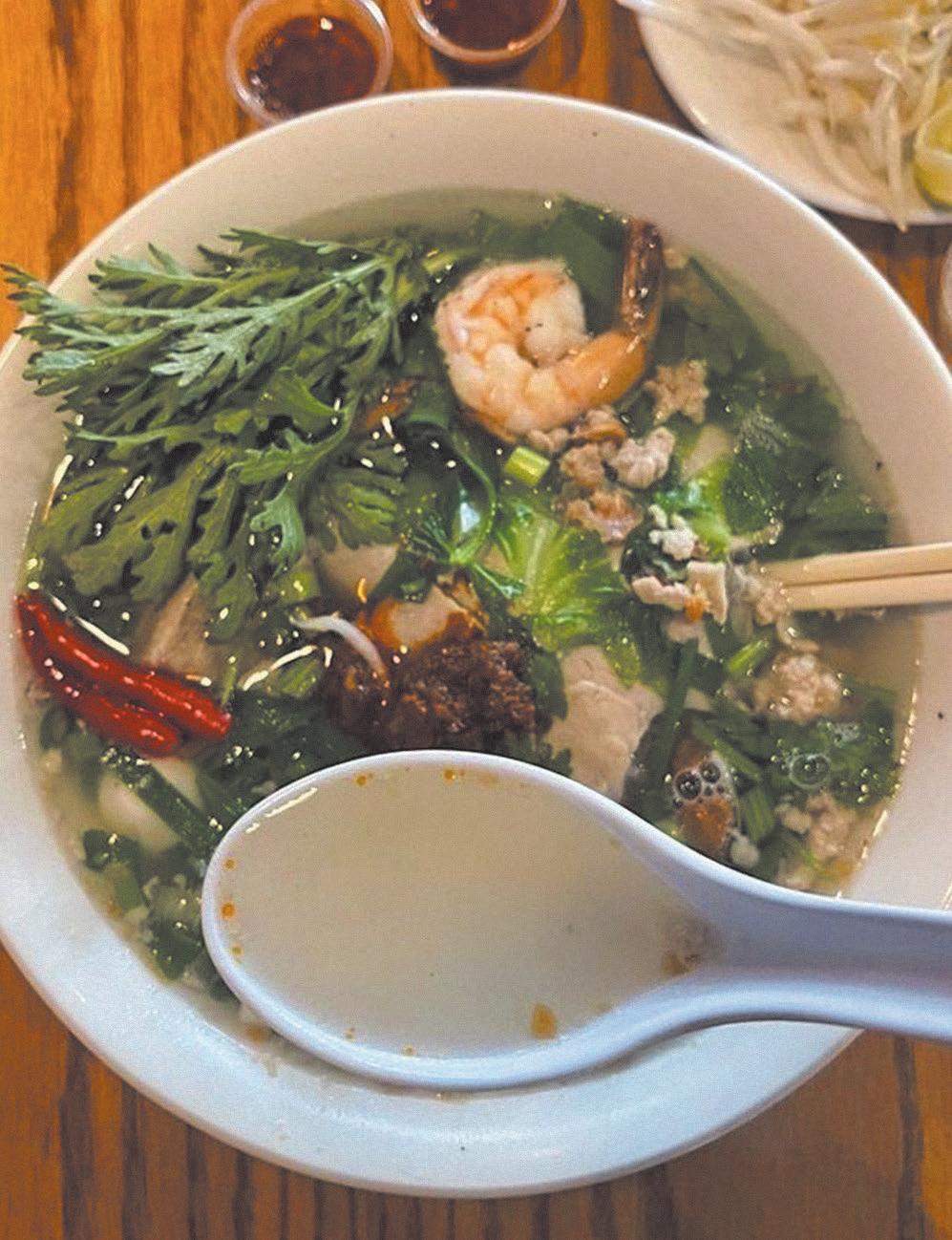
we might get the feijoada, the vaca frita, or the moqueca, or maybe their Cubano sandwich.” And if it’s brunch, Quiñónez Denton says they serve her favorite dish in the city: an arepa eggs benedict with the “most delicious” ají-spiked hollandaise.
“The green salad is dressed with an addictive creamy vinaigrette, and the pork and chicken schnitzels are both great, especially when served with a side of the spaetzle.” She recommends ending with a cup of “extra decadent” hot chocolate when available.
Quiñónez Denton also had nothing but good to say about Street Disco, the natural wine and endlessly reinventing restaurant at 4144 SE 60th. “I love the balance of creativity and technique here,” she says. “The dishes at Street Disco are playful and yet executed with finesse. The food is fresh, bright, and boldly seasoned, and the service is also very friendly and knowledgeable.”
Finally, Swiss Hibiscus (4950 NE 14th), run by a Swiss-Hawaiian chef and her partner, is a long standing favorite. “We especially enjoy coming here when the weather’s cold and dreary because those Alpine dishes are so comforting,” Quiñónez Denton says. “The escargot in garlic butter is a classic that’s made even better by adding an order of the sautéed mushroom in garlic butter to the mix. The green salad is dressed with an addictive creamy vinaigrette, and the pork and chicken schnitzels are both great, especially when served with a side of the spaetzle.” She recommends ending with a cup of “extra decadent” hot chocolate when available.
Peter Cho Loves Phở Mehka, Annam VL, and Sammich
Mornings mean noodle soups for Peter Cho and his wife and business partner, Sun Park. The couple behind Han Oak, Jeju, and Toki are creatures of soup habit. Bún bò Huế and phở at Mekha (6846 NE Sandy) or any of the rotating soups at the new Annam VL (3336 SE Belmont) are what’s for breakfast.
“They’re always consistent, and we’re kind of creatures of habit,” Cho says. “We don’t check out new stuff, we just go to our spots. It’s always delicious. It’s crave-worthy. In the morning, it’s cold, and we’re like ‘Let’s get noodles.’ And it’s one or the other at this point.”
For lunch, Cho says he’s probably spent more money at Sammich (2137 E. Burnside) than any other restaurant in Portland. Owner Melissa McMillan and Cho are longtime buds, so he grabs any of the “amazing” sandwiches, and talks shop. “It’s as much a great meal as it is a restaurant therapy session or catching up on what’s going on with Mel,” he says. ■

Things have changed since the early 2000s (not to mention 1896), but biking in Portland is still magical.
BY TAYLOR GRIGGS

Portland has been a bike city since the 1890s, just after the invention of the modern bicycle. By 1896, the city’s bike culture was strong enough to warrant distribution of a map of cycling routes, which contained advertisements for bike-friendly business establishments, including places to shop for men and women’s cycling apparel.
When I first saw the 1896 Cyclist’s Road Map to Portland, I felt a sense of reverence and awe. Here I was, a 21st century Portland bicyclist, using streets established in the Gilded Age by people who had never seen cars. A lot has changed over the last 128 years, but we still have the magic that is riding a bicycle in Portland.
In more recent history, Portland became known as one of America’s top bike capitals in the 1990s and early aughts, with the formation of heavy-hitting advocacy groups (the Bicycle Transportation Alliance, now The Street Trust, was founded in 1990), iconic events like the annual Pedalpalooza Bike Summer festival (2002), and bike scene documentarians, most notably Jonathan Maus of BikePortland (2005).
Williams Ave every morning (or so I hear). But things have slowed down since then.
Over the last few years, in response to the decline in local bike ridership, people have prematurely eulogized Portland’s bike scene— much like they’ve done with the city

there’s nothing anyone could do to tamp down my enthusiasm for it. I love riding my bike in this city, right here in the year 2024. And I mean, REALLY love. I am literally head-over-heels, madly in love with it, and I know I’m not the only one.

Going into the early 2010s, Portland seemed set to become the next Amsterdam, only quirkier— the Netherlands don’t have a Unipiper! Back then, there were bike traffic gridlocks on the Hawthorne bridge, and hundred-person pelotons commuting on North
in general. While much of the “Portland is dead” narrative is overblown (hence the Mercury ’s “Say Nice Things” theme), it’s true that people aren’t riding their bikes here as much anymore, and that has real, undeniable consequences for street safety and planetary health.
But for all the time I’ve spent complaining about biking in Portland—and all the time I’ll certainly spend doing it in the future—
My romance with biking in Portland started as soon as I moved here. During my first few months in the city, I attempted to curb my disorientation by pounding the pavement on my cherry red hybrid Trek, figuring out the streets by trial and error. Experiencing Portland by bike helped me discover things I would’ve overlooked if I was traveling any faster than 10 miles per hour, and I began to feel like the city was a vibrant ecosystem that I could fit myself into.
Of course, I’ve enjoyed riding my bike in many different cities, some of which have objectively superior infrastructure and accommodations for people on bikes. Still, there’s something uniquely magical about riding a bike in Portland.
I feel that magic when I see the goats on the Northeast Rodney Avenue greenway, or stop during my commute to pet a neighborhood cat. I felt it when 20 people, most of them strangers, showed up at my house to help me move five miles across the city by bike. I feel it during the first warm days of spring, when the bottom deck of the Steel Bridge is packed with people on their bikes en route to see the cherry blossoms, and I
feel it during the most miserable days of winter, when I’m all alone on the quiet streets, getting drenched by rain. I feel it when I wave to people I know when I pass them on a greenway, and take time to chat with them if we’re headed in the same direction.
Of course, I feel the magic when I look at the bike map from 1896, which proves that bicycling is integrated into this city’s very fabric, and we’d better do all we can to preserve and expand it.
(Quick, nonexhaustive speed round of other amazing Portland bike things: The school “bike bus” movement, when sunset hits at the Pedalpalooza kick-off ride, people who casually ride tall bikes, the year-round, weekly Portland State University farmer’s market ride, the absolutely raucous insanity of the annual World Naked Bike Ride, and all the passionate activists who have dedicated their lives to making the city better and safer for all people, on all modes of transportation.)
To me, loving Portland and riding my bike go hand-in-hand. Only by spending so much time close to the ground, with the crisp air in my face and the feeling of uneven pavement under my wheels, could I develop the relationship with this city that I have today.
Am I intrigued by the tales of gridlock bike traffic and seemingly unstoppable progress? Of course, and I’d love to see that again. But we can work to make things better and simultaneously avoid getting blinded by nostalgia. There’s a lot to delight in right now—and those delights are easiest to find by bike. ■

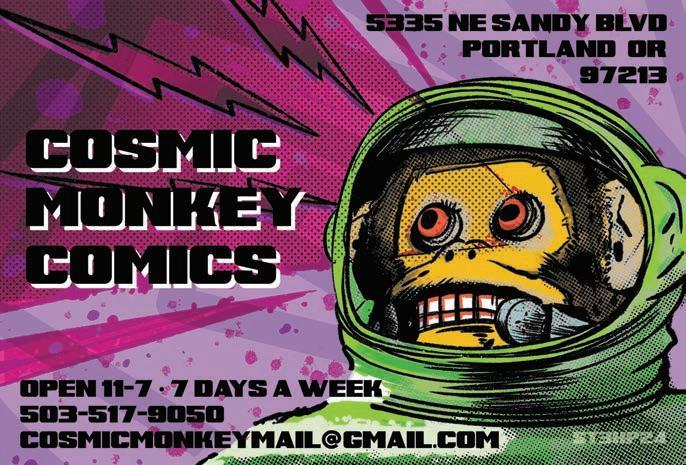


Whether you’re into sci-fi, romance, or weirdness, Portland has a bookstore for YOU!
BY LINDSAY COSTELLO
As someone who briefly braved the trenches of bookstore work (I was a “generalist” at Powell’s during the pandemic), my appreciation for our city’s bookstores is unshakable. Luckily for me (and for all of us), Portland takes its bookstores seriously, and the city’s book-digging options have expanded in recent years to include genre-driven stores and rare book haunts. Here are five shops that deserve a second browse.
Parallel Worlds Bookshop
Parallel Worlds, a sweet, turquoise-walled shop with a kaleidoscopic quilted banner by local artist Biz Miller draped above the cash register, is also a sprawling cosmos of books to get lost in—the science fiction- and fantasy-themed store, which celebrates its second anniversary at the end of April, is thronged with spacey reads. One wall showcases covers of vintage mass-market paperbacks, complete with unicorns, martians,

and breastplated women framed by chunky typefaces. Although my reading taste trends toward the earthbound end of the spectrum, I’m still a disciple of Octavia Butler and Ursula K. Le Guin, so copies of Kindred and The Lathe of Heaven stood out. (The shop is planning another Ursula birthday celebration this year, too.) Owner Sam Jones is jazzed about Parallel Worlds’s new horror writing section, which includes titles by women and LGBTQ+ authors. The store’s book club, run by shop hand Shayna Hodge, is also a hit—it’s expanded to include trivia nights, book swaps, and offshoot clubs for specific book series.
2639 NE Alberta. Open Weds-Sun 12-6 pm
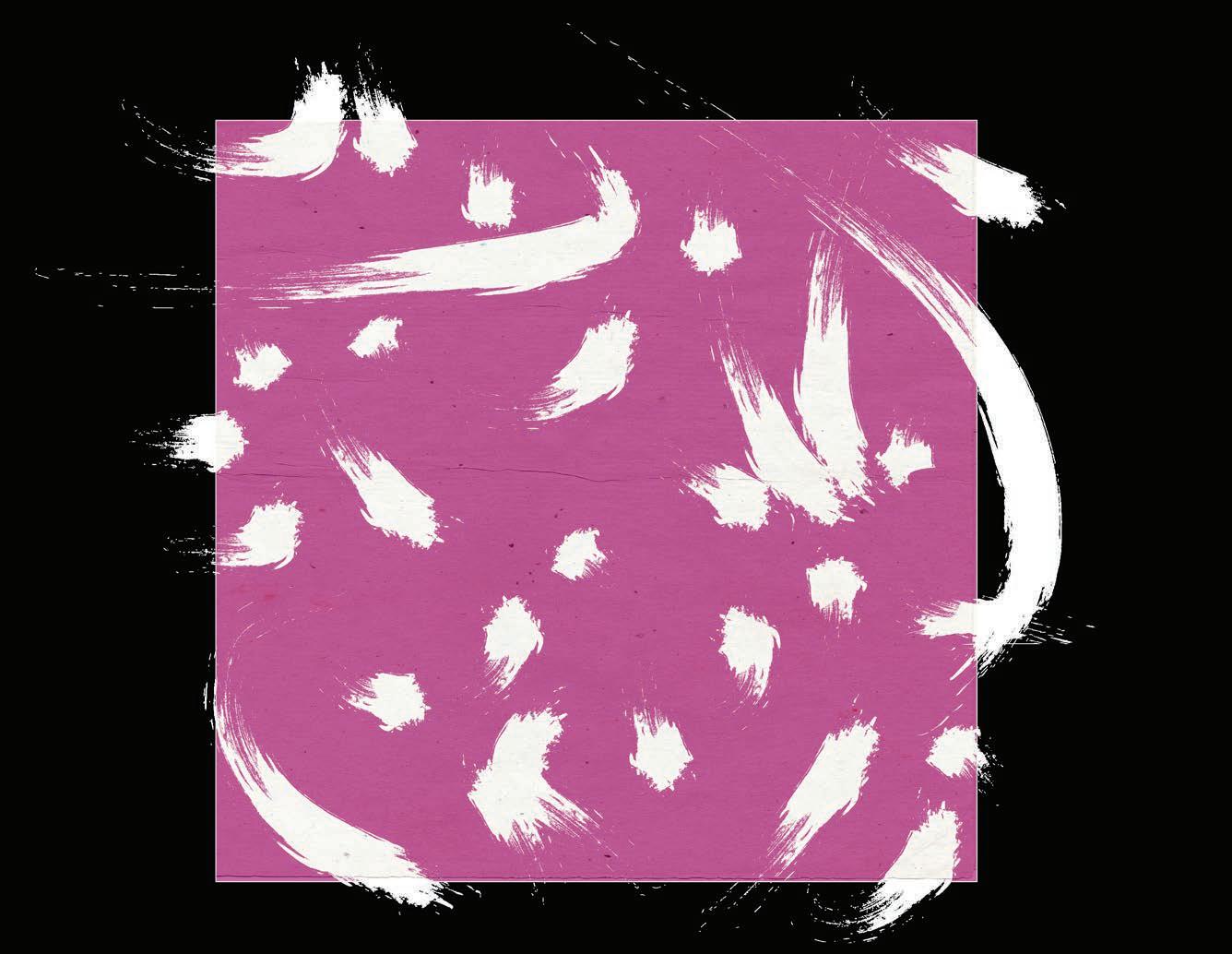




Chaparral Books
If you’ve ever been dorkily enraptured by the local history books in the Oregon Historical Society’s gift shop, first of all: same. Also, you’ll likely love the roomy South Portland bookshop Chaparral Books, which special-





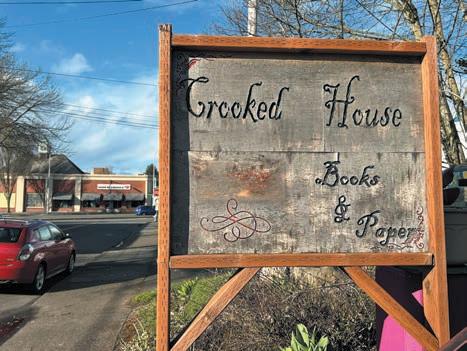
izes in rare and collectible tomes on Native American and Western Americana themes. I found plenty on old Portland and Indigenous peoples of the Pacific Northwest, but the store has a far wider selection than that; there are extensive literature, children’s, and biography sections, and a whole room of art books. Prices are reasonable, too—I spotted a cool San Juan Island birding book for $4, and a signed Annie Dillard first edition was $25. But Chaparral is, above all, the kind of bookstore that causes one to freeze and launch into a full-on existential crisis about their career path. (Wouldn’t you rather spend all day in a warmly lit, wooden-floored space, surrounded by old books and perfectly maintained plants in ceramic pots?)
5210 S Corbett. Open daily 10-6 pm
Crooked House Books
This bookstore scores 300 bonus points (yes, there’s a point system—try to keep up) for its
three hospitable shop cats, Bruno, Sylvie, and Tommy. And while the homey storefront is only open on Saturdays and by appointment, Crooked House’s quirky volumes also pop up at rare book fetes like the Seattle Antiquarian Book Fair, Rare Books LA, and Rose City Book & Paper Fair. Perhaps evidenced by its name, Crooked House specializes in all things off-kilter—think rare vintage domestica, instructional pamphlets, pop-up books, miniature tomes, decorative bindings, and paper ephemera. It’s the kind of stuff an Antiques Roadshow appraiser in a funky suit might appreciate. I recommend heading there if you’re in search of a gift your mom actually won’t find anywhere else, or if you’re looking to cultivate a book collection that says “I’m peculiar in a cool way, à la Bella Baxter in Poor Things.”
1602 NE 40th. Open Sat 11 am-5 pm, or by appointment
Grand Gesture Books
Although Grand Gesture Books hasn’t yet found its brick-and-mortar home, I’d be a dummy to leave Portland’s newest Black woman-owned romance bookstore off this list. Owner Katherine Morgan, who scores 100 bonus points for her housecat, Ramona, also curates the romance section at Powell’s Books (and happens to be one of my favorite Twitter follows). Currently, Grand Gesture’s
bodice-rippers can be drooled over on Bookshop.org. (I suggest snagging a book by Kennedy Ryan—“I don’t know what she puts in her books, but I eat it up every time,” says Morgan.) The shop has also raised funds for Gaza relief efforts, and Morgan has launched three steamy in-person book clubs. They’re “for all your romance needs,” she explained. “One is all about variety, one is for the LGBTQIA+ community, and one aims to be quite spicy.”
Online at bookshop.org/shop/grandgesturebooks
One of the finest moments in cinema history was the unveiling of You’ve Got Mail’s Shop Around the Corner, an Upper West Side twinkle-lit haven for Beatrix Potter and Roald Dahl books. (In one scene, Meg Ryan dons
a conical hennin and reads to eager-eared children.) Green Bean Books, a children’s bookstore on Alberta, conjures a surprising amount of Shop Around the Corner’s charm, except it’s better, because it’s, you know… real. On a recent visit, Portishead’s Dummy spilled smoothly from the speakers as I noted the stuffed animals tucked into every nook and cranny of the store—stuffed soup, stuffed mice, stuffed acorns, stuffed rockhopper penguins. And because I am still capable of childlike wonder, the shop’s vintage vending machines spoke to me. (They dole out fake facial hair, muskrat finger puppets, and thimble-sized journals.) If you have a kid or know a kid, Green Bean is a no-brainer; the shop also hosts weekly storytimes, author readings, and a youth advisory board on upcoming books. 1600 NE Alberta. Open daily 11 am-5 pm ■





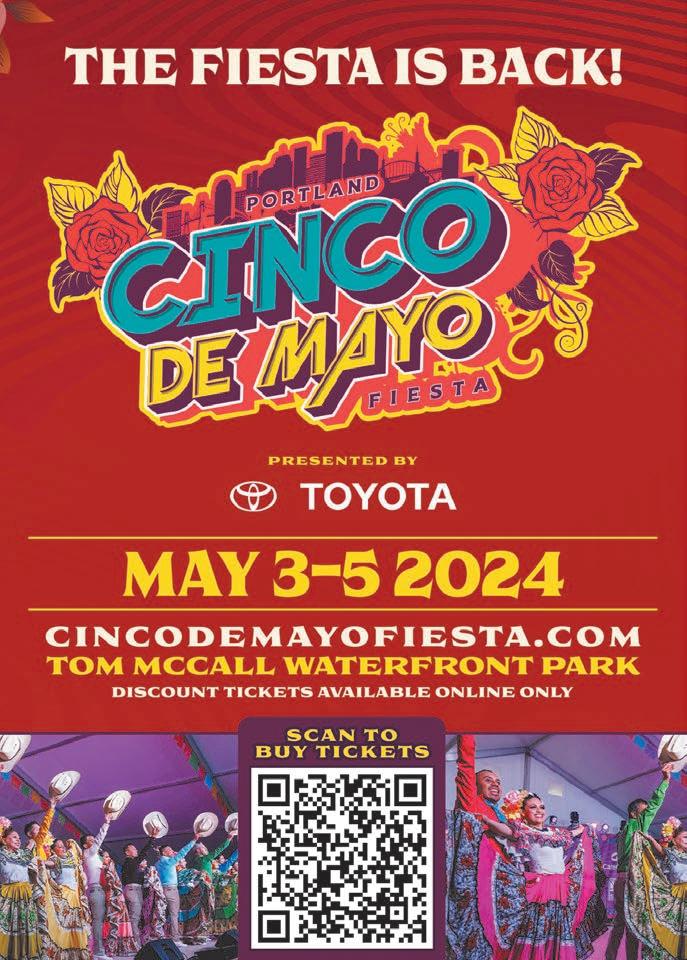
















You might not know these performers (yet), but these drag artists consistently embody Portland’s strange and timeless beauty.
BY ANDREW JANKOWSKI

hat better cheerleaders could Portland ask for than drag artists? They gossip, they make out with guys in letterman jackets behind dumpsters, and they amp everyone up with their pep, musicality, and choreography, right when the home team looks down for the count.
These artists show up night after night, as many have for the past decade or longer. Some will be remembered for their looks, for the ways they interpret music, for their comedy, or their consistently fresh routines. It’s tempting to say “and some will be remembered for none of these things,” but the honest truth is they work toward and realize this city’s dream: to be such a self-actualized weirdo that one can walk in the door and get handed money by strangers.
This article could easily turn into a book, considering how many high caliber drag talents Portland has, but we have to start somewhere. If you don’t already know these performers, get familiar:
Alexis Campbell Starr
Alexis Campbell Starr’s voice is rich with the diction and conviction of a saved woman–
who might eat from the offering plate. But this reigning Rose Empress doesn’t reach for easy Christian jokes, instead using proper church vocabulary to humorously address the congregated apostles and apostates. Campbell Starr regularly advocates and fundraises for HIV research and patient support. A resident cast member of Darcelle XV Showplace, Campbell Starr often performs stirring gospel hymns in her repertoire of secular pop and R&B songs—but her reads will get you right with Jesus. Campbell Starr is so charismatic, it’s a wonder RuPaul hasn’t found her yet.
Alexis performs regularly at Darcelle XV Showplace, 208 NW 3rd
Valerie DeVille
Poison Waters recently said you don’t have a roast if Valerie DeVille isn’t on your dais. DeVille wears barbs like badges of honor, proudly answering to “homewrecking whore” and “rotted bitch.” The sour-faced sweetheart models herself after toxic but iconic stage moms (like Patsy Ramsey and Danielle Staub), and stands out in the pantheon of Cruella wig wearers—from



class per person. Expires 7/1/24.


Manilla Luzon and Porcelain Black to Nicki Minaj and Emma Stone—for her moxie and clownish physicality. But unlike that Disney villain, DeVille has a soft spot for animals, and once starred in a pet adoption billboard campaign, cuddling a puppy and sneering at traffic.
Valerie performs regularly around town, and hosts Drag Queen Paint Party at Bottle & Bottega, 1406 SW Broadway
Diva Dott
Diva Dott studied closely under her drag mother, the late artist Patrick Buckmaster, to become one of Portland’s most delightfully deranged drag artists. Dott hosts and performs in revues featuring casts with all body types, gender expressions, and kink tolerance. Next to nothing disgusts her, and next to nothing is outside her imagination. Over the past decade, Dott has honed her out-there pop culture references and yearround punk hooker aesthetic to stand out on her own. On her journey from club kid to leading event producer, Dott has become known and highly regarded as a filthy, nasty gal with a heart of gold.
Diva regularly performs at CC Slaughters (219 NW Davis) and Back2Earth (3536 NE MLK Blvd)
Jocelyn Knobs
Drag queens from your favorite reality contests call Portland’s Jocelyn Knobs when-
ever they need a truly over-the-top costume. Knobs has designed playful, imaginative, and rhinestone encrusted looks for RuPaul’s Drag Race contestants Lala Ri, Kornbread “The Snack” Jeté, and Irene Dubois, as well as Drag Latina’s Queen Andrew Scott. Despite her brushes with fame, Knobs’ costumes are still affordable for many Portland queens, and she’s polished her craft considerably since 2018, which is no shade by any means. Who knows how much longer it’ll be before she’s ready for a close-up of her own?
Jocelyn regularly performs at the Clinton Street Theater (2522 SE Clinton)
Max Little & Mars
Performing and producing duo Max Little and Mars have hosted drag shows featuring drag kings, trans, and nonbinary artists, as well as proudly self-styled monsters and “drag things” for nearly a decade. The duo’s shows can be simple as spotlighting ‘90s hunks, or as high concept as exploring our solar system, planet-by-planet. Above all else, they’re fun. Max and Mars also collaborate offstage. They commemorated one of their first revues in their documentary Goodbye Haute Glue (2021), as well as performed in their experimental variety web series, Magic Night at the Trans Bar!, an unapologetically queer (trans and weird) take on Tim & Eric’s absurdist humor.
Max & Mars perform regularly at Black Water Bar, 835 NE Broadway ■
Let’s say nice things about the city’s most adorable critters!
BY ELINOR JONES
Tired: Portland is weird. Wired: Portland is sexy! Inspired: Portland is cute! Sure, we’re a messy collection of normies, snobs, and freaks, but you better believe we’re adorable, too. Every last one of us. And some special citizens are cuter than most. They are the venerated… the squee-worthy… the very reason that the heart-eyes emoji exists. Friends, I present to you: Portland’s Cutest Creatures.*

Tamu—whose name means sweetness—has been mostly out of public view since his birth at the zoo last December, but on the day I visited, they opened a gate to allow him space to frolic. Alas, he and his mom were afraid of the smell of their new scale used to weigh Tamu, so they stayed hidden. (Did you know rhinos are highly particular creatures? Now you do!) Zoo officials will keep letting him explore his habitat, and visitors can expect to see more and more of him as the weather warms up!
Timber and Thorn aren’t siblings by blood, but they’ve built brotha-from-anotha-motha bonds since coming to the zoo from Alaska. They aren’t quite a year old, so they’re still kinda scrawny—but as adults they can hit 500 lbs, and stand between 5-6 ft tall. Wow! A favorite activity is rooting around in paper bags to find hidden treats of dried bugs. The brothers sleep together like freakin’ kitty cats, and zoo handlers say that they’re at their cutest first thing in the morning, when they are sleepy and have beary messy bedhead.


Don’t tell the other animals, but when I chatted with zoo staff about who they all thought was the cutest, Moshu was frequently named! She exploits her impossibly perfect face for all the bamboo and apple snacks she can fit into her impossibly perfect face. Moshu is getting up there in years and spends a lot of time sleeping, so it can be hard to peep her in person. Rumor has it she’s most active in the mornings, but only for about a half-hour, so if you do get to see her moving around, this means that you are a chosen person, and destined for great things.
Filbert and Maple are the zoo’s Instagram page stars, and they love nothing more than takin’ pics and chompin’ sticks. And it’s a good thing they like grinding their pearly whites on the foliage—this is what keeps their teeth from getting too long and unhealthy! While tiny beaver babies would be adorable, don’t expect a next generation from this pair; they are platonic life partners, nothing more. (Maple even has a little beaver IUD! Those exist!!) It’s a beaver state; we’re just living in it.

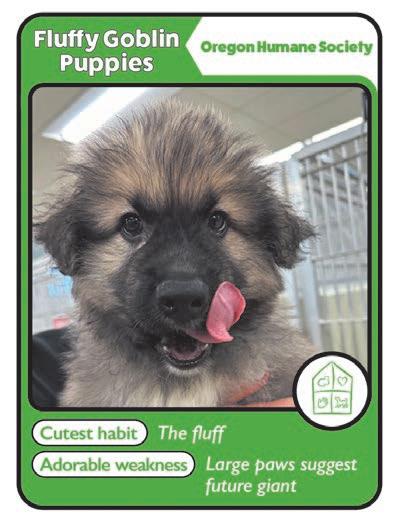
There’s a litter of three creatures at the Humane Society that are purportedly puppies, but could easily be mistaken for small brown sheep with crimped perms. Their names are Rikki, Tikki, and Tavi, they are some kind of shepherd mix, and their mass is approximately 90 percent floof. Fun fact: puppies take a ton of work for shelters— they’re messy, need frequent help, and are most at risk for getting sick—so shelters try to get them in and out as fast as possible. If you’re looking to adopt a dog, don’t feel bad about picking out a puppy, because they need it!

Oliver and Millie are gorgeous Persian pals who were left behind when their humans moved. Outrageous! Who could leave such perfect faces behind?! Sure, these faces are prone to crusty boogers and could cause the cats breathing problems, but what they lack in snout length they more than make up for in softness, sweetness, and you guessed it… cuteness.

Takeoff does not let his giganticness stop him from flopping onto his back at your feet to demand belly rubs. He found himself at the Humane Society when his family lost their housing—it can be hard to rent with a big dog!—but he was clearly very loved. He would not stop shaking my hand, and I’m sure it’s his friendly nature and not because of the snacks I was dishing out. Quite honestly, there has never been a more boopable schnoz.

My dog, Dolly Walnuts. With only one eyeball you’d think her vision would be limited, but no—she sees every single bus, bird, and garbage truck, and she hates them all! She enjoys quietly sitting on my lap when I’m in work meetings and only barking when it’s my turn to unmute and talk. She’s a 17 lb disaster and my very best friend.
*Did I demand this assignment to gain private access to the zoo and Oregon Humane Society so I could pet animals? Yes, obviously this is what I did! What… like you wouldn’t have? ■
